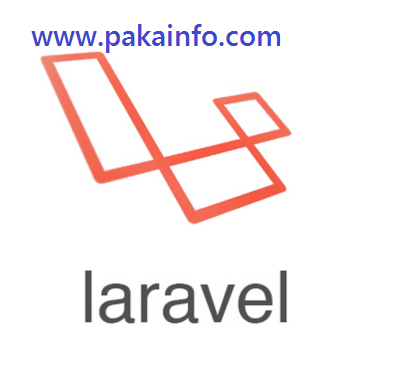Today, We want to share with you Laravel Role based permission ACL Tutorial.In this post we will show you laravel user roles and permissions tutorial, hear for Laravel Permissions User Role based access control we will give you demo and example for implement.In this post, we will learn about Laravel Nova Permissions (Roles and Permission based Access Control (ACL)) with an example.
Laravel Role based permission ACL Tutorial
There are the Following The simple About Laravel Role based permission ACL Tutorial Full Information With Example and source code.
As I will cover this Post with live Working example to develop laravel 5.7 user roles and permissions, so the some laravel 5.7 roles and permissions for this example is following below.
Laravel Setting Up
create a new Laravel Application
$ laravel new roles-permissions
Laravel 5.7 Authentication
Authentication scaffolding
$ php artisan make:auth
Models & Migrations
creating the required models and migrations, migrate the database
//creating the required models and migrations $ php artisan make:model Permission -m $ php artisan make:model Role -m //migrate the database $ php artisan migrate
Permission migration file
set of fields for Roles and Permission based Access Control (ACL)
Schema::create('permissions', function (Blueprint $table) {
$table->increments('id');
$table->string('slug'); //edit-posts
$table->string('name'); // edit posts
$table->timestamps();
});
Role migration file
set of fields
Schema::create('roles', function (Blueprint $table) {
$table->increments('id');
$table->string('slug'); //tester-elc
$table->string('name'); //tester-elc
$table->timestamps();
});
Adding pivot tables
create a new migration, pivot table between users and permissions, create a pivot table for users_roles, users_permissions table,
$ php artisan make:migration create_users_permissions_table --create=users_permissions
//pivot table between users and permissions
Schema::table('users_permissions', function (Blueprint $table) {
$table->integer('user_id')->unsigned();
$table->integer('permission_id')->unsigned();
//FOREIGN KEY CONSTRAINTS
$table->foreign('user_id')->references('id')->on('users')->onDelete('cascade');
$table->foreign('permission_id')->references('id')->on('permissions')->onDelete('cascade');
//SETTING THE PRIMARY KEYS
$table->primary(['user_id','permission_id']);
});
//create a pivot table for users_roles
$ php artisan make:migration create_users_roles_table --create=users_roles
//users_permissions table
Schema::create('users_roles', function (Blueprint $table) {
$table->integer('user_id')->unsigned();
$table->integer('role_id')->unsigned();
//FOREIGN KEY CONSTRAINTS
$table->foreign('user_id')->references('id')->on('users')->onDelete('cascade');
$table->foreign('role_id')->references('id')->on('roles')->onDelete('cascade');
//SETTING THE PRIMARY KEYS
$table->primary(['user_id','role_id']);
});
//roles_permissions
$ php artisan make:migration create_roles_permissions_table --create=roles_permissions
Schema::create('roles_permissions', function (Blueprint $table) {
$table->integer('role_id')->unsigned();
$table->integer('permission_id')->unsigned();
//FOREIGN KEY CONSTRAINTS
$table->foreign('role_id')->references('id')->on('roles')->onDelete('cascade');
$table->foreign('permission_id')->references('id')->on('permissions')->onDelete('cascade');
//SETTING THE PRIMARY KEYS
$table->primary(['role_id','permission_id']);
});
Laravel Migration
$ php artisan migrate
Setting up the relationships
Role.php
//Role.php
public function permissions() {
return $this->belongsToMany(Permission::class,'roles_permissions');
}
Permission.php
//Permission.php
public function roles() {
return $this->belongsToMany(Role::class,'roles_permissions');
}
Creating a Trait
Permissions/HasPermissionsTrait.php
belongsToMany(Role::class,'users_roles');
}
public function permissions() {
return $this->belongsToMany(Permission::class,'users_permissions');
}
}
User hasRole
HasPermissionsTrait.php
public function hasRole( ... $roles ) {
foreach ($roles as $role) {
if ($this->roles->contains('slug', $role)) {
return true;
}
}
return false;
}
$user = $request->user();
dd($user->hasRole('admin','editor'));
Checking Permissions
HasPermissionsTrait.php
protected function hasPermissionTo($permission) {
return $this->hasPermission($permission);
}
protected function hasPermission($permission) {
return (bool) $this->permissions->where('slug', $permission->slug)->count();
}
Create a new PermissionsServiceProvider for authorization
$ php artisan make:provider PermissionsServiceProvider
PermissionsServiceProvider.php
//PermissionsServiceProvider.php
public function boot()
{
Permission::get()->map(function($permission){
Gate::define($permission->slug, function($user) use ($permission){
return $user->hasPermissionTo($permission);
});
});
}
HasPermissionsTrait.php
public function hasPermissionThroughRole($permission) {
foreach ($permission->roles as $role){
if($this->roles->contains($role)) {
return true;
}
}
return false;
}
public function hasPermissionTo($permission) {
return $this->hasPermissionThroughRole($permission) || $this->hasPermission($permission);
}
Giving Permissions
HasPermissionsTrait.php
//HasPermissionsTrait.php
public function givePermissionsTo(... $permissions) {
$permissions = $this->getAllPermissions($permissions);
dd($permissions);
if($permissions === null) {
return $this;
}
$this->permissions()->saveMany($permissions);
return $this;
}
Deleting Permissions
HasPermissionsTrait.php
//HasPermissionsTrait.php
public function deletePermissions( ... $permissions ) {
$permissions = $this->getAllPermissions($permissions);
$this->permissions()->detach($permissions);
return $this;
}
Add the Seeders
create seeders for permissions, roles & users
$ php artisan make:seeder PermissionTableSeeder $ php artisan make:seeder RoleTableSeeder $ php artisan make:seeder UserTableSeeder
UserTableSeeder.php
//UserTableSeeder.php
$tester_role = Role::where('slug','tester')->first();
$agent_role = Role::where('slug', 'agent')->first();
$dev_perm = Permission::where('slug','create-tasks')->first();
$agent_perm = Permission::where('slug','edit-users')->first();
$tester = new User();
$tester->name = 'info Muneer';
$tester->email = '[email protected]';
$tester->password = bcrypt('secret');
$tester->save();
$tester->roles()->attach($tester_role);
$tester->permissions()->attach($dev_perm);
$agent = new User();
$agent->name = 'admin Butt';
$agent->email = '[email protected]';
$agent->password = bcrypt('secret');
$agent->save();
$agent->roles()->attach($agent_role);
$agent->permissions()->attach($agent_perm);
RoleTableSeeder.php
$dev_permission = Permission::where('slug','create-tasks')->first();
$agent_permission = Permission::where('slug', 'edit-users')->first();
//RoleTableSeeder.php
$tester_role = new Role();
$tester_role->slug = 'tester';
$tester_role->name = 'Front-end tester';
$tester_role->save();
$tester_role->permissions()->attach($dev_permission);
$agent_role = new Role();
$agent_role->slug = 'agent';
$agent_role->name = 'Assistant agent';
$agent_role->save();
$agent_role->permissions()->attach($agent_permission);
//PermissionTableSeeder.php
//PermissionTableSeeder.php
$tester_role = Role::where('slug','tester')->first();
$agent_role = Role::where('slug', 'agent')->first();
$projectMake = new Permission();
$projectMake->slug = 'create-tasks';
$projectMake->name = 'Create Tasks';
$projectMake->save();
$projectMake->roles()->attach($tester_role);
$usersEdit = new Permission();
$usersEdit->slug = 'edit-users';
$usersEdit->name = 'Edit Users';
$usersEdit->save();
$usersEdit->roles()->attach($agent_role);
run our migration with the –seed flag.
$ php artisan migrate:refresh --seed
test this out in your routes files
$user = $request->user();
dd($user->hasRole('tester'));
dd($user->givePermissionsTo('create-tasks'));
dd($user->can('create-tasks'));
Setting up the Laravel Custom Blade Directives
PermissionsServiceProvider.php
Blade::directive('role', function ($role){
return "check() && auth()->user()->hasRole({$role})) :";
});
Blade::directive('endrole', function ($role){
return "";
});
Laravel Blade view files
@role('admin')
Hello from the admin
Welcome to Admin Page
@endrole
Setup the Laravel Middleware
$ php artisan make:middleware RoleMiddleware
Laravel Register kernel & setup
public function handle($request, Closure $next, $role, $permission = null)
{
if(!$request->user()->hasRole($role)) {
abort(404);
}
if($permission !== null && !$request->user()->can($permission)) {
abort(404);
}
return $next($request);
}
Laravel Define a routes
Route::group(['middleware' => 'role:admin'], function() {
Route::get('/admin', function() {
return 'Welcome To Admin';
});
});
Angular 6 CRUD Operations Application Tutorials
Read :
Summary
You can also read about AngularJS, ASP.NET, VueJs, PHP.
I hope you get an idea about Laravel Role based permission ACL Tutorial.
I would like to have feedback on my Pakainfo.com blog.
Your valuable feedback, question, or comments about this article are always welcome.
If you enjoyed and liked this post, don’t forget to share.
